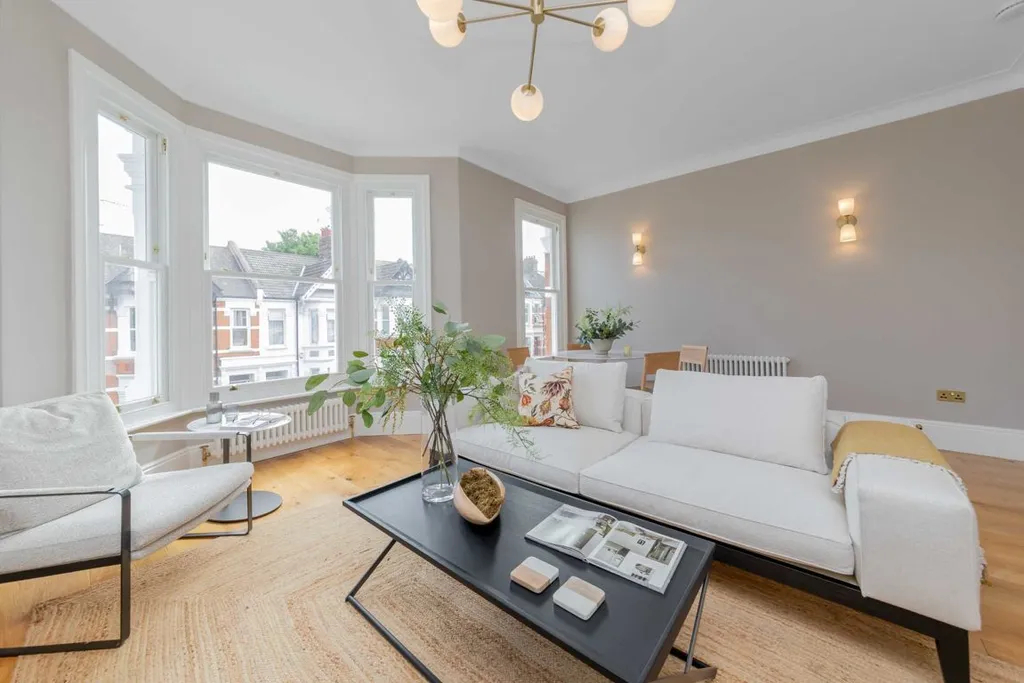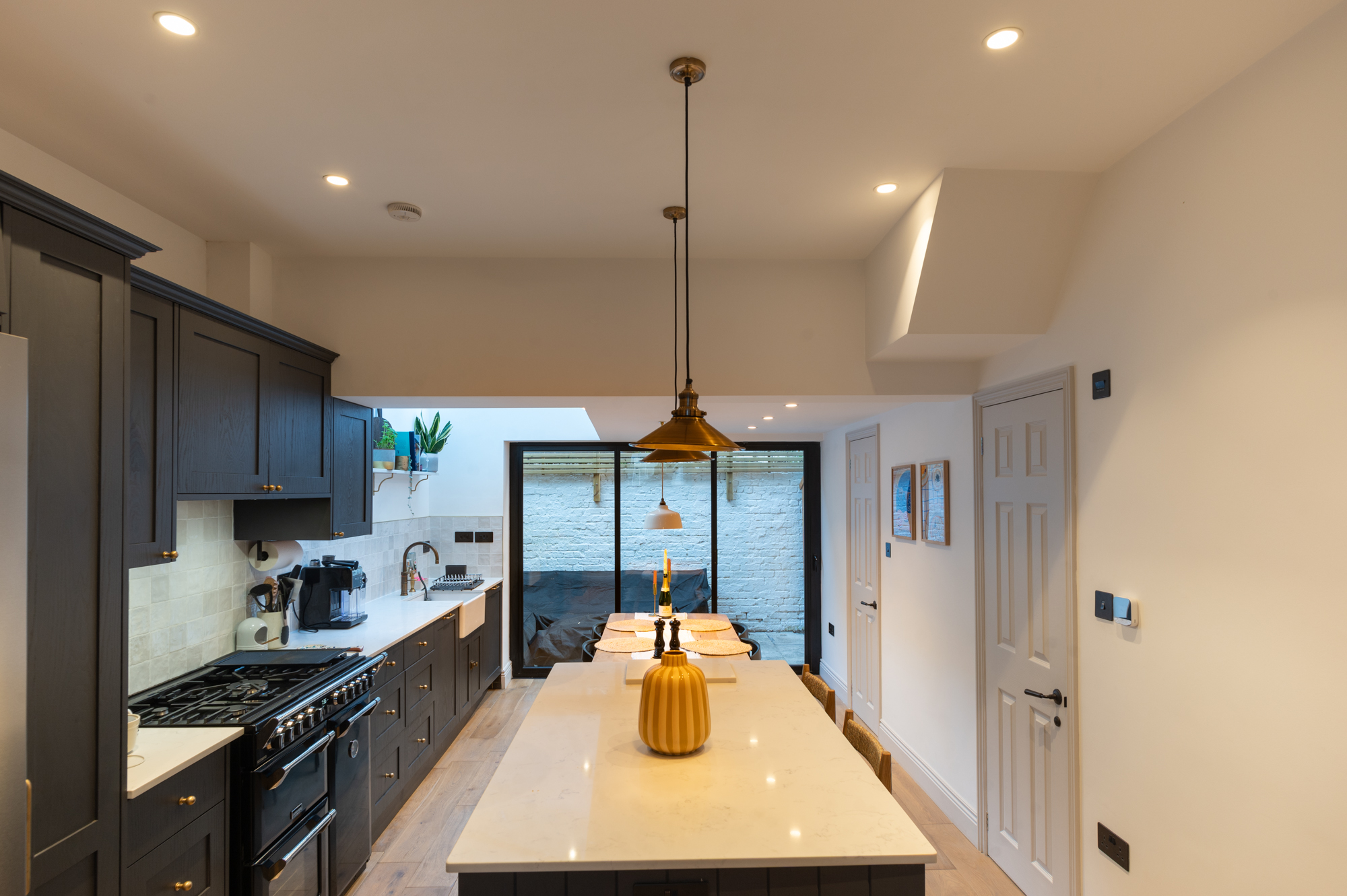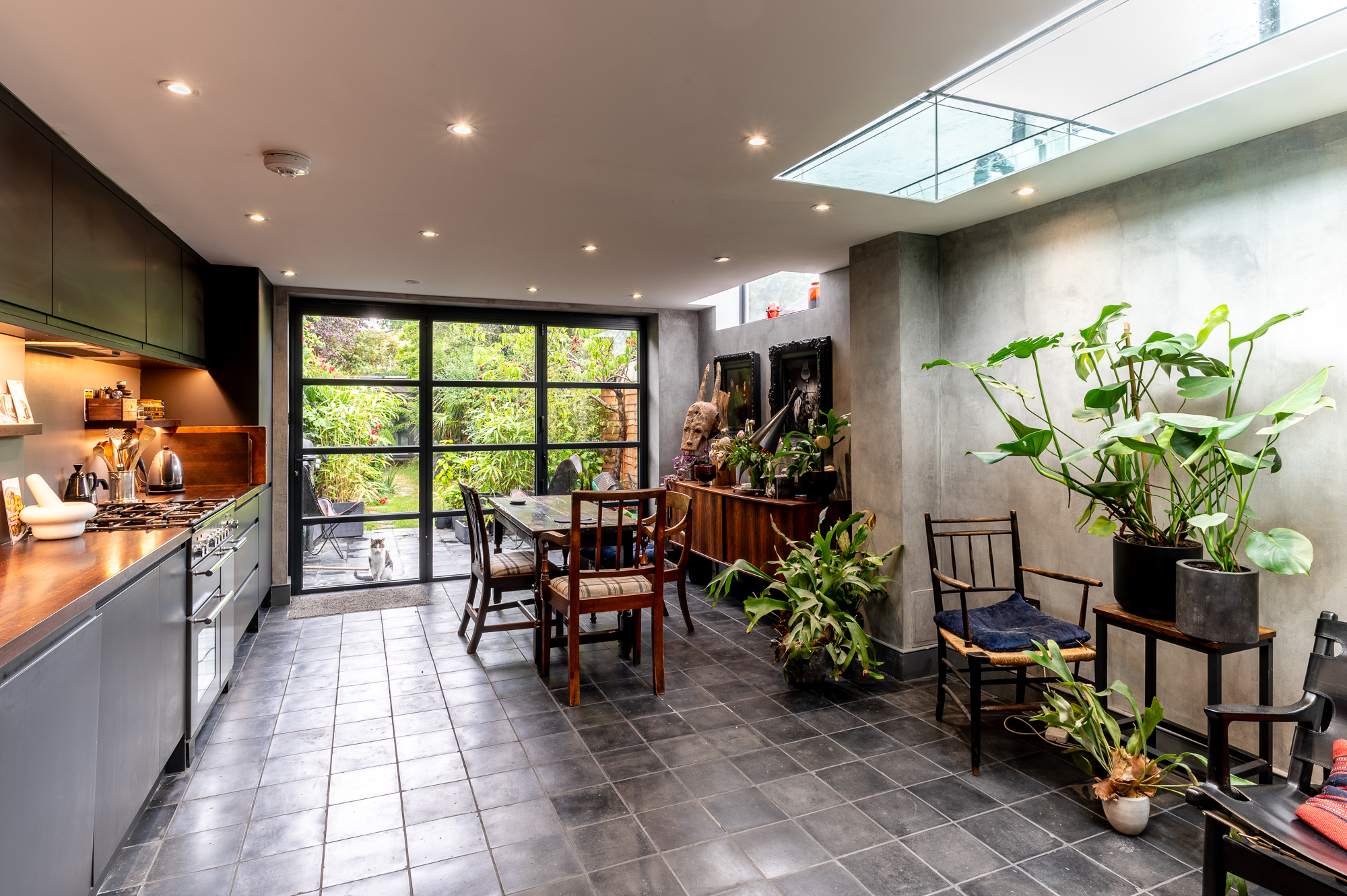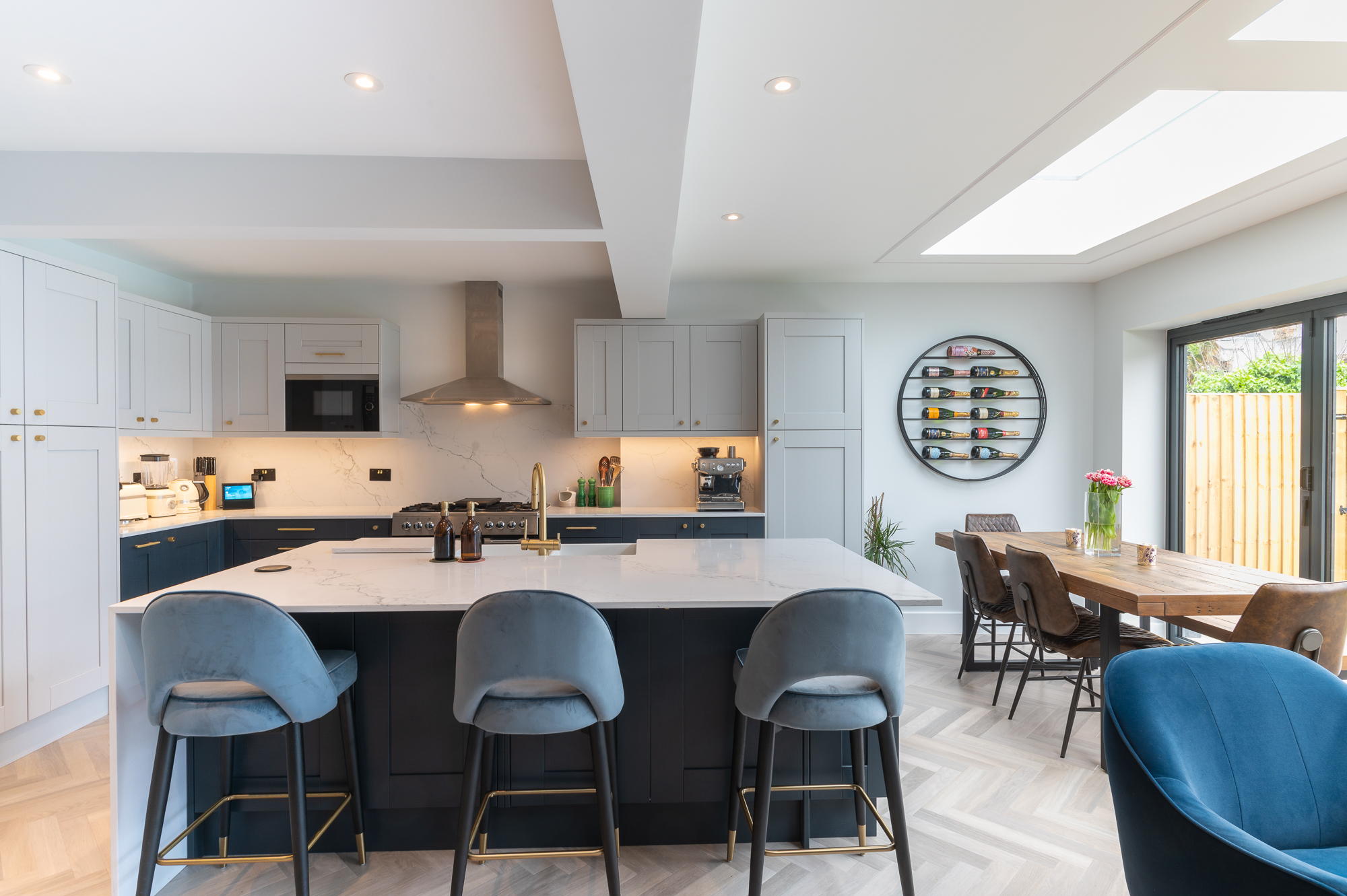The turf of tennis champions, Merton’s leafy suburban streets are family-friendly. Excellent transport links connect the District and Northern lines, taking you directly to West and Central London. It is the only London Borough with tube, rail and tram services. A selection of good state and independent schools has showcased better results than the London average. Family life thrives here, with every convenience at your doorstep. But is space the thorn in your side? Loft Conversions Merton turns things rosy for you. They afford space without compromising the garden and boost property value, too. Good Design & Build brings space-maximising and aesthetic-enhancing solutions to your Victorian and 1930s homes.
A loft conversion turns the unused or underutilised attic into a habitable room or living space. It is a popular home improvement primarily due to the high cost of property and limited available space in many urban areas. By converting a loft into a functional living area, homeowners can make better use of their existing space and increase the value of their property. The process also insulates a home’s loft, improving energy efficiency. Depending on the available space, design, and budget, loft conversions can add one or multiple rooms within the existing footprint.
Velux or Rooflight Loft Conversion – utilising Velux roof windows, this conversion transforms the loft space into a habitable room. Unlike other loft conversion types that involve altering the roof’s structure or shape, a roof light conversion can turn the loft into a living space while keeping the roof’s external appearance largely unchanged. Roof windows provide natural illumination and ventilation.
Dormer Loft Conversion – involves extending the existing roof vertically to create additional headroom and floor space. It offers room for dormer windows for natural light and ventilation. Rear and side dormers are the most popular in urban settings. Dormers can have a flat or a pitched roof. It is a straightforward design and one of the most commonly used.
L-shaped Loft Conversion – ideal for Victorian properties with a rear outrigger, it involves placing two dormers at a right angle to each other. One dormer placed on the main roof and the other on the outrigger form two rooms. Sometimes, a half dormer can create a roof terrace with a balcony.
Mansard Loft Conversion – typically involves removing the existing roof slope on one or both sides of a property and replacing it with a new, steeper roof with a flat or gently sloping top. It creates more headroom and usable floor space in the loft. Mansards have dormer windows and inward-sloping walls of 72 degrees.
Hip-to-Gable Loft Conversion – involves altering the hip end (sloping) side of a roof to create a vertical or gable end. Hipped roofs can restrict the usable floorspace in a loft due to the roof design. They are perfect for freeing up extra space in semi-detached or terraced houses.
Costs for different types of loft conversions vary. The design, size, and materials used can alter pricing. Good Design & Build provides bespoke plans to maximise your loft space and full cost transparency. Book a free consultation for your loft conversion in Merton and get a free itemised quote from our experts.
Room in the roof conversion (basic) – £35,000
Dormer loft extension – £50,000
Mansard extension – £60,000 – £65,000
Hip-to-gable extension – £65,000
L-shaped extension – £65,000 – £75,000
If you are planning to convert your loft, remember that it should improve the functionality as well as the value of your property. Additional square footage can enhance your home’s value when designed to high standards. Poorly conceived and carried out constructions can instead lower property values. For loft conversions with high ROI, hire reputed professionals who can handle the design, construction, and finishing aspects with expertise.
Loft conversions also require adherence to building regulations and planning permission guidelines. Loft conversion specialists address all necessary considerations to create aesthetically and structurally sound spaces that seamlessly blend with the existing architecture.
We breathe new life into Victorian and 1930s homes in London with design-centric loft conversions. We have carried out loft conversions for period homes in Merton Area and South London, as well as the rest of London, enhancing the staying power in much-loved neighbourhoods.
Our in-house architects specialise in innovative solutions for small and large loft spaces. Each project carries a bespoke design tailored to your needs, property, and lifestyle. We create 3D designs to give you a more realistic experience of the space.
There are no lengthy contracts to sign. We keep it simple with separate contracts for the design and build phases. At the end of the design stage, we present you with a no-obligation build contract. Our team fulfils all the necessary pre-build requirements, including securing planning permission when necessary. We work closely with local authorities and third-party suppliers. A dedicated project manager oversees construction work on each project through completion.
The design, floor area, materials, and added features determine the cost of loft conversions. Simpler designs often cost less than intricate and detailed structures. However, each property has unique characteristics that may make a particular type of conversion more beneficial than others. A design that maximises space and value has a better return on investment.
Our full-service loft conversions provide all design, planning and construction solutions. We undertake all pre-build necessities, such as submitting building control applications, applying for planning permission, preparing method statements and assisting with Party Wall Agreements and Thames Water build-over Agreements. Our team works with local authorities and third-party suppliers. All our products carry insurance-backed warranties. We offer complete project management from start to finish.
Loft conversions fall under permitted development rights, subject to limitations. However, there are instances when they do need planning permission. Exceeding or building outside PD guidelines, living in a conservation area or a listed building and certain conversion designs require planning permission.
How we deliver projects
Our process is simple and divided into two distinct phases with separate contracts: Design and Build. As a client you only commit to one phase at a time depending on what stage of the process you are in. Each phase consists of three stages as described below.
1. Design
This is the kick-off point for your project. We carry out a complete architectural measured survey of the property. This allows us to create accurate CAD design drawings. This is followed by a design meeting to start discussing your ideas in more detail.
2. Planning
At this stage we finalise the designs with you and start preparing planning applications as needed. We place a high priority on ensuring that plans, designs and schedules are all based on a thorough and detailed understanding of planning guidelines. We co-ordinate with local authorities until the decision is made, and the planning approval is secured.
3. Technical
Once the planning consent is secured, we translate the design drawings into more detailed technical drawings for the purposes of building control and construction. This also includes specifications and structural calculations. At this stage, we will also submit to you our ‘no obligation’ quote for the build phase.
4. Pre-build
90% of our clients decide to stick with us after the design phase is completed. Once the build contract is signed, we kick off the process by making sure all the pre-build processes are complete. These include assistance with party wall agreements, Thames Water build over agreement, submitting building control application, and preparing method statements etc as needed. This stage ends with a pre-start meeting with your foreman before the actual build begins.
5. Build
One of our foremen will be dedicated to your project and will be on-site to manage everyday works. Our project managers will be overseeing the works to make sure they are completed to high standards, within your budget and on time. Throughout the process we will keep you updated with the progress and coordinate the works with third parties such as kitchen or flooring suppliers. We will also advise and guide you to choose any suppliers if needed.
6. Handover
As the build draws to finish, we will help to iron out any ‘snags’ to make sure everything is completed to your satisfaction. We will put together all necessary certificates such as gas, electricity and building control completion along with warranties for glazing, boiler etc. At the final completion meeting, we will hand you these documents, together with the keys to your house. Needless to say, you can contact us any time after this, if you want us to look at something.
This is the kick-off point for your project. We carry out a complete architectural measured survey of the property. This allows us to create accurate CAD design drawings. This is followed by a design meeting to start discussing your ideas in more detail.
At this stage we finalise the designs with you and start preparing planning applications as needed. We place a high priority on ensuring that plans, designs and schedules are all based on a thorough and detailed understanding of planning guidelines. We co-ordinate with local authorities until the decision is made, and the planning approval is secured.
Once the planning consent is secured, we translate the design drawings into more detailed technical drawings for the purposes of building control and construction. This also includes specifications and structural calculations. At this stage, we will also submit to you our ‘no obligation’ quote for the build phase.
90% of our clients decide to stick with us after the design phase is completed. Once the build contract is signed, we kick off the process by making sure all the pre-build processes are complete. These include assistance with party wall agreements, Thames Water build over agreement, submitting building control application, and preparing method statements etc as needed. This stage ends with a pre-start meeting with your foreman before the actual build begins.
One of our foremen will be dedicated to your project and will be on-site to manage everyday works. Our project managers will be overseeing the works to make sure they are completed to high standards, within your budget and on time. Throughout the process we will keep you updated with the progress and coordinate the works with third parties such as kitchen or flooring suppliers. We will also advise and guide you to choose any suppliers if needed.
As the build draws to finish, we will help to iron out any ‘snags’ to make sure everything is completed to your satisfaction. We will put together all necessary certificates such as gas, electricity and building control completion along with warranties for glazing, boiler etc. At the final completion meeting, we will hand you these documents, together with the keys to your house. Needless to say, you can contact us any time after this, if you want us to look at something.
What Our Clients Say
Featured Projects

Harlesden
Sellons Ave NW10 4HJ
The project included creating a master bedroom in the loft with an adjoining terrace.
Learn more

Fulham
Orbain Road SW6 7JZ
This project was completed in 2023 and the approximate budget was £101,000.
Learn more

Lambeth
Hetherington Road SW4
We completed this stunning project for our client Angus in Lambeth.
Learn more

Teddington
Station Road SW4 7PA
We completed this exciting project for our clients on Station Road, a quaint residential area in the heart of Teddington.
Learn more

Leyton
Windsor Road E10
We completed this kitchen extension on Windsor Road, a charming residential street nestled in the heart of Leyton.
Learn more

Harlesden
Sellons Ave NW10 4HJ
The project included creating a master bedroom in the loft with an adjoining terrace.
Learn more

Fulham
Orbain Road SW6 7JZ
This project was completed in 2023 and the approximate budget was £101,000.
Learn more

Lambeth
Hetherington Road SW4
We completed this stunning project for our client Angus in Lambeth.
Learn more

Teddington
Station Road SW4 7PA
We completed this exciting project for our clients on Station Road, a quaint residential area in the heart of Teddington.
Learn more

Leyton
Windsor Road E10
We completed this kitchen extension on Windsor Road, a charming residential street nestled in the heart of Leyton.
Learn more
Build a Quote!
Let's get started with building your own bespoke quote for your dream extension. Tell us as much in detail as possible to get most accurate price.
Get StartedBuild a Quote!
Let's get started with building your own bespoke quote for your dream extension. Tell us as much in detail as possible to get most accurate price.
Get Started







